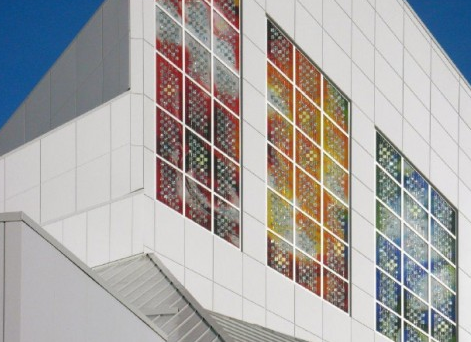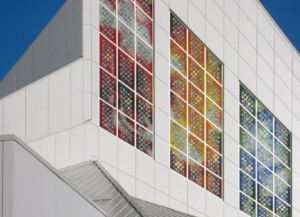Here I am writing about religion, science and technology and the 21st Century and suddenly I run across the following story.
A Catholic church in the city of Saskatoon, in Saskatchewan, Canada, has combined faith with photovoltaics. Its stained-glass windows contain 1,000 embedded solar cells. The stained-glass art is produced by a Toronto artist, Sarah Hall. The photovoltaics come from embedded silver, trapezoidal solar cells of varying size sandwiched between layers of glass.
The church will generate 2.5 Kilowatts of energy from its stained glass investment. The power will be fed into the provincial utility, SaskPower and will reduce reliance on other power sources. Currently Saskatchewan relies heavily on coal-fired power and has an enormous carbon footprint amounting to 16 tons of CO2 per person per year for electricity alone and 72 tons in total for all uses. According to a recent study, Transforming Saskatchewan’s Electrical Future, this is an unsustainable number, 10 times higher than it has to be.
The cathedral is Saskatchewan’s first building-integrated photovoltaic system (BIPV) designed to incorporate solar into walls and windows throughout the structure and going beyond just placing panels on the roof. It is also probably the prettiest solar panel display you will ever see.
It is also shows how organized religion can begin to influence a constituency about making appropriate personal environmental choices here in the 21st century. The church becomes a role model in addressing renewable energy, carbon footprint and a sustainable future. And considering the amount of carbon Saskatchewan currently produces it couldn’t happen in a better place.










